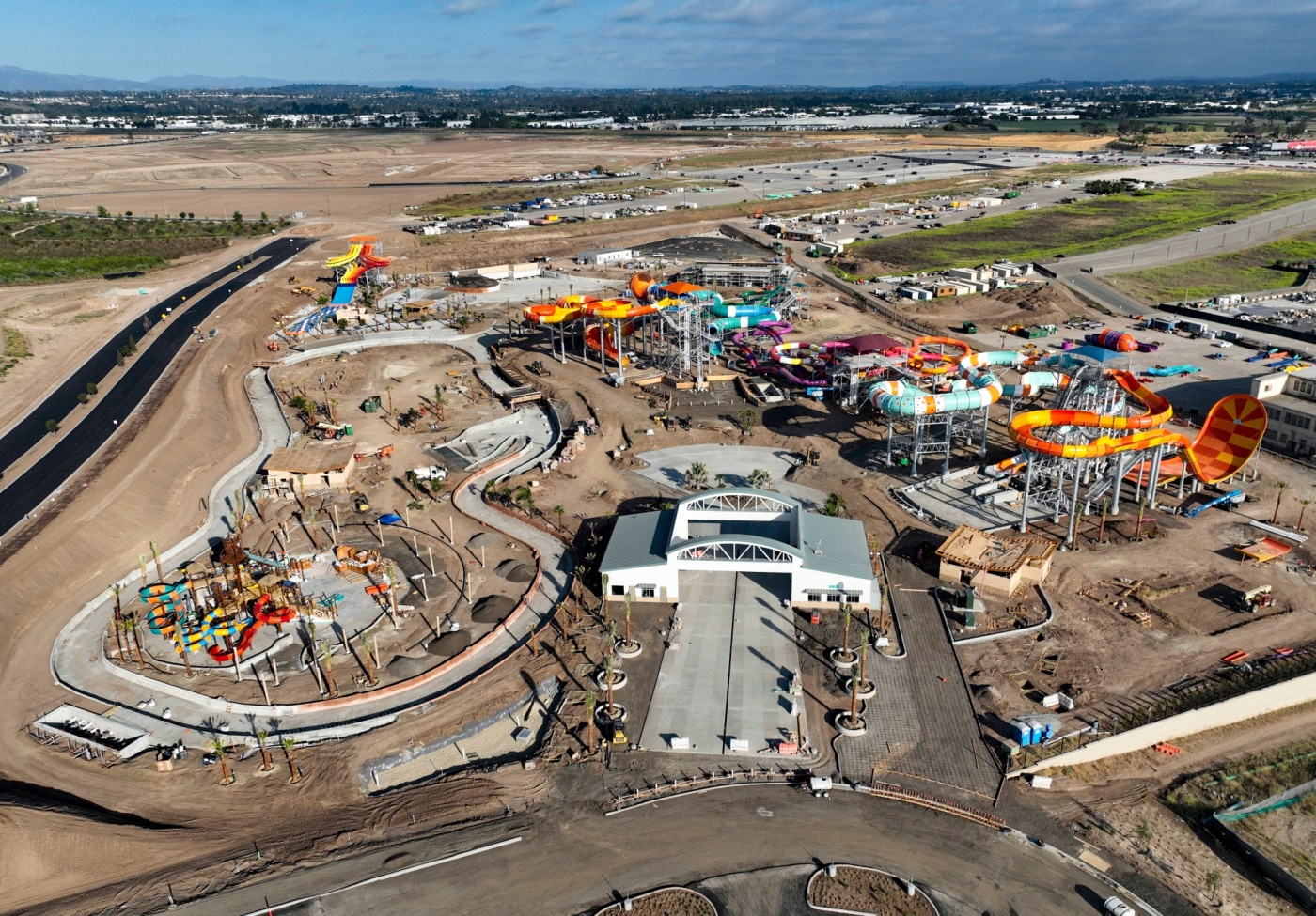Amid a third year of drought conditions, the message to Californians remains: Conserve, conserve, conserve.
So how wise, some wonder, is opening a water park like Wild Rivers in Irvine, at a time when residents are being asked to cut back on their daily water use and officials are cracking down on quenching “non-functional” turf statewide?
The $60 million water park is expected to welcome visitors starting June 20. On a 20-acre footprint in Irvine’s Great Park, Wild Rivers will feature a number of water coasters and slides, a wave pool, lazy river and kids attractions.
After the original park closed in 2011 to make way for housing, its return to the city has been a long time coming for fans who remember splashing down rides during the park’s more than 25-year run.
Wild Rivers owner Mike Reidel said conversations about water use during drought conditions are “fairly typical” in his line of work, and he’s sensitive to the situation across California. Despite the appearance of frivolous use, he contended that “water parks are relatively low intensity water use” for a commercial operator.
“We fill, and then we recycle and filter, and kind of run through that way,” he said. “It’s not like we fill and then we fill the next day. All that water is going through our filtration system.”
David Feldman, a professor at UCI who studies water resource management and policy, agreed the optics of soaked water slides against a parched landscape are “definitely not good,” but putting into context the use at a typical water park compared to other recreational activities paints perhaps a less dramatic picture.
The initial filling up of an average water park takes about 900,000 gallons, Feldman said, and every month, about 2% of that will be replaced due to water loss from evaporation, splashing or backwashing (the process of cleaning water filters).
“That’s a lot of water,” he mused. Yet, by comparison, operating a golf course – of which Southern California has many – uses “considerably more,” he noted, “about 300,000 to 500,000 gallons a day.”
“And yet one could say fewer people play golf than use a waterpark,” Feldman said. “So if you’re looking at frivolous water uses from the standpoint of recreation, neither of them are great, but let’s at least put it in some relative context.”
On a given day at a water park in the summer, as many as 6,000 to 7,000 visitors will visit to cool off, he added, “which means 6,000 to 7,000 people not at home using water in various ways.”
“Does it offset? I don’t know,” he said. But far fewer golf courses attract that many people, he added. “So by comparison, there may be an offset factor.”
At the same time, the question of opening a water park “given the fact that we are in a drought and the fact that every gallon of water is precious,” is a valid one, Feldman said, and should be weighed among “other societal issues,” such as the availability of other places for young people to stay occupied or whether “maybe the pressures on water aren’t so bad compared to other things within the community,” he said.
“We just need to be aware of the fact that there are these tradeoffs.”
Reidel noted that Wild Rivers has historically provided thousands of jobs to young people every year, many their very first. And for those who don’t have a backyard pool, the park provides a place to stave off the summer heat.
“Yes, we use water, but we also employ the kids, we also provide money to the city that they can use for some of their other amenities,” Reidel said.
Meanwhile, he’s cognizant of the drought conditions, he said, and is incorporating water saving features throughout the park, including waterless urinals, drought resistant plants and a new mechanism to filter the water, making backwashing more efficient.
Recycled water will also be used on landscaping that isn’t directly near the pools visitors will dip in. And park officials are working with the Irvine Ranch Water District to find more ways the district could recycle and use the chemically treated water from the park that hits its storm drains, Reidel said.
“We’re trying to be to be smart and environmentally conscience with the park’s design,” he said.
“And we understand that this is probably going to be an ongoing problem and ongoing shortage for California for possibly forever,” he said. “So we are certainly sensitive to it.”
Related Articles
Wild Rivers water park in Irvine sets June 20 opening date





